Stephen James started his career in visual effects in 2005 at DNEG. He went on to work at Digital Domain, Image Engine and Scanline VFX before returning to DNEG in 2013. He has worked on numerous projects such as Star Trek Beyond, Blade Runner 2049, Deadpool 2 and Dune.
What is your background?
I am from Vancouver, BC and studied visual effects in art school. I was fortunate to start my career at DNEG London as a Compositor in 2005. Since then, I have gone back and forth between studios in Vancouver and London but I have been at DNEG Vancouver since the studio opened.
How did you and DNEG get involved in this movie?
I was completing Dune: Part One when Overall VFX Supervisor Mike Brazelton approached me about supervising Bullet Train.
How did it feel to work with Director David Leitch and VFX Supervisor Mike Brazelton again?
I was fortunate to work with VFX Supervisor Mike Brazelton on many shows over the years. The great thing about working with people on multiple projects is that you gain collective experience and it gets easier and easier to solve creative or technical problems. We had a great experience working with Director David Leitch on Deadpool 2 and Hobbs and Shaw, and we knew that he would want us to go big and bold on Bullet Train.
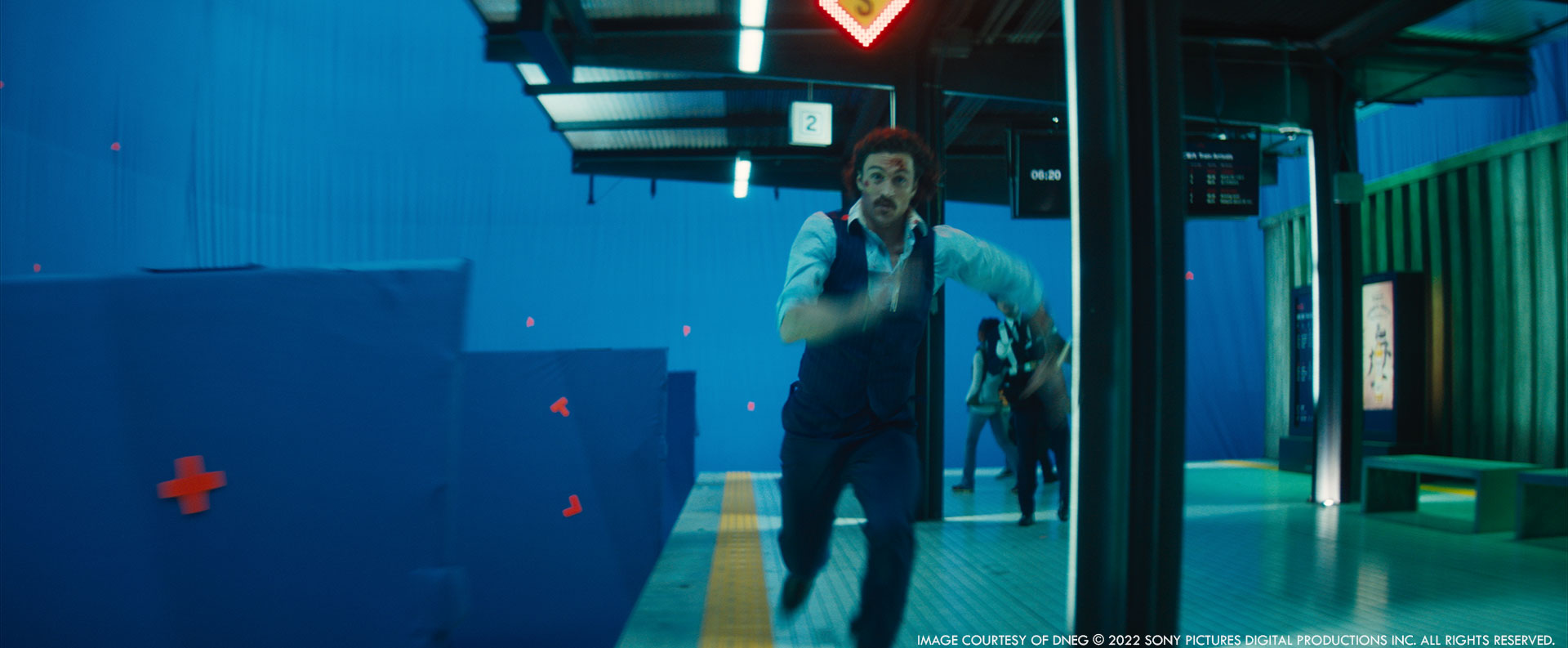
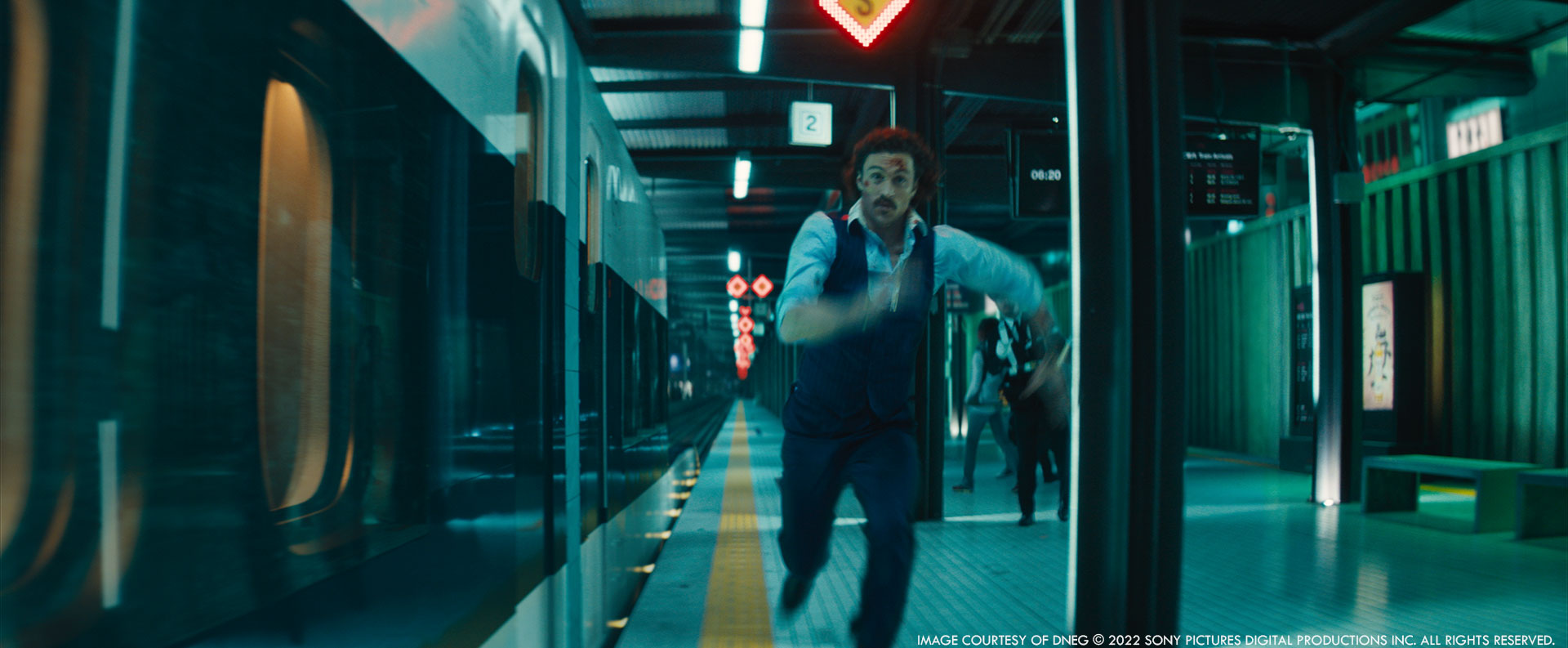
What was their approach and expectations about the visual effects?
The movie is fast, over the top, and very colourful, so the visual effects had to be an extension of that. The direction was for each environment to feel very unique. We thought of each new environment and station as a kind of ‘postcard’ that would have unique or iconic buildings and/or beautiful landscapes.
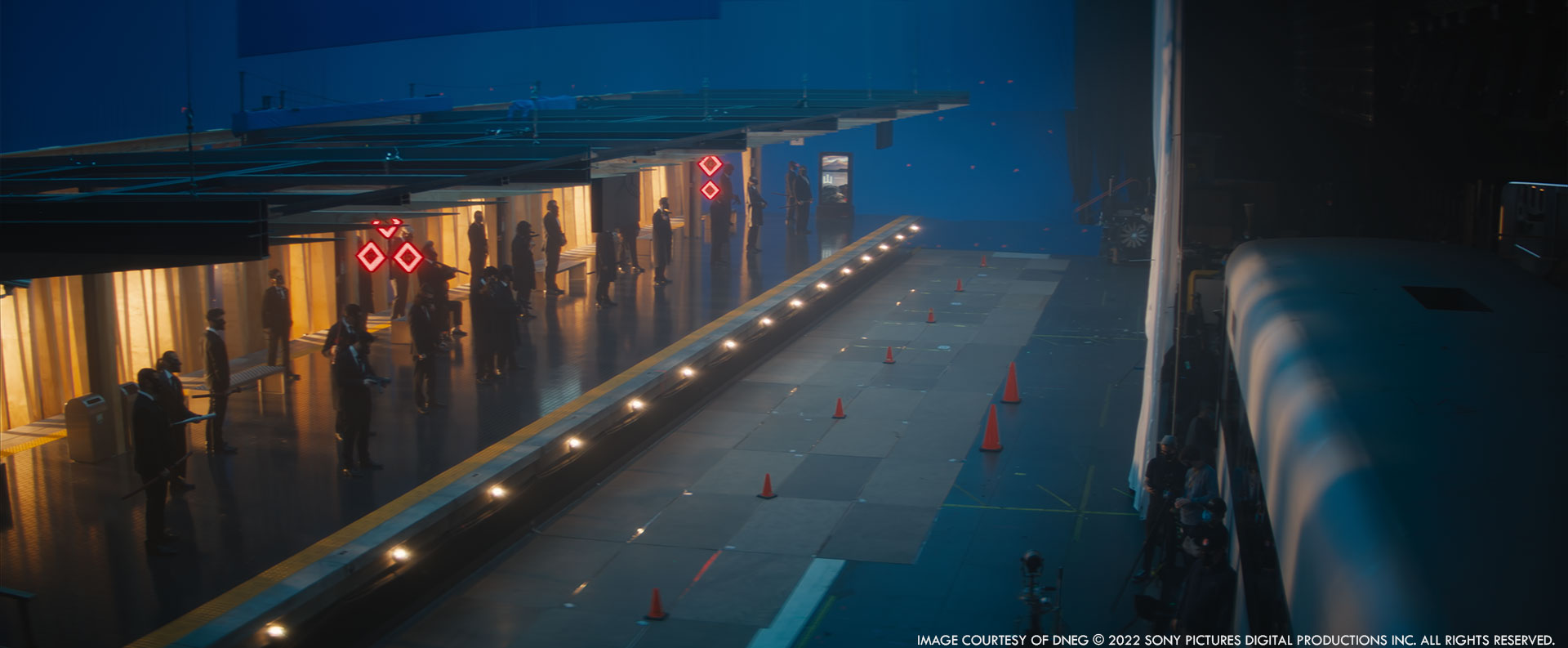
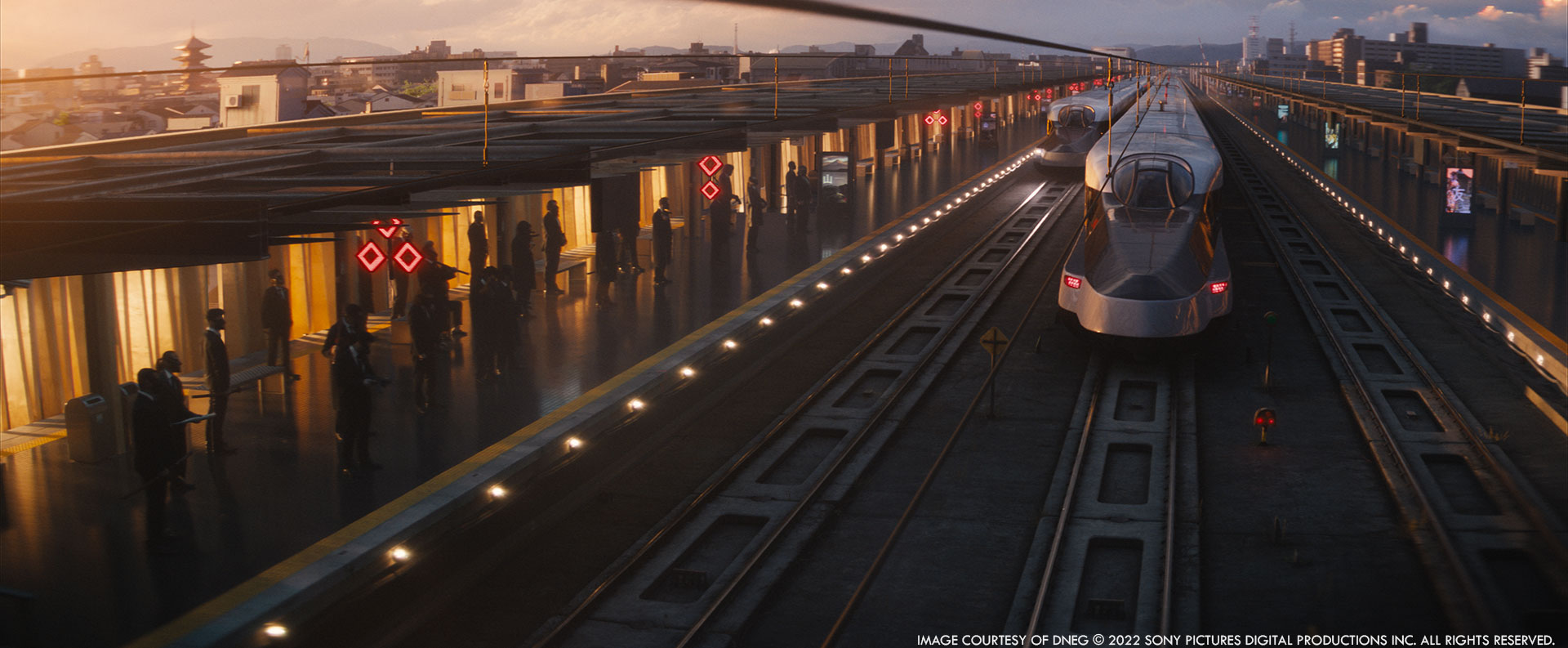
What was your approach for the background plates inside the train?
The backgrounds were split between day and night sequences. The LED walls worked perfectly for all night, tunnel and dawn areas of the journey. Once the sun rises, the amount of light from the LED screens wouldn’t be sufficient, and the LED walls were switched to display bluescreen/greenscreen for us to replace with CG environments.
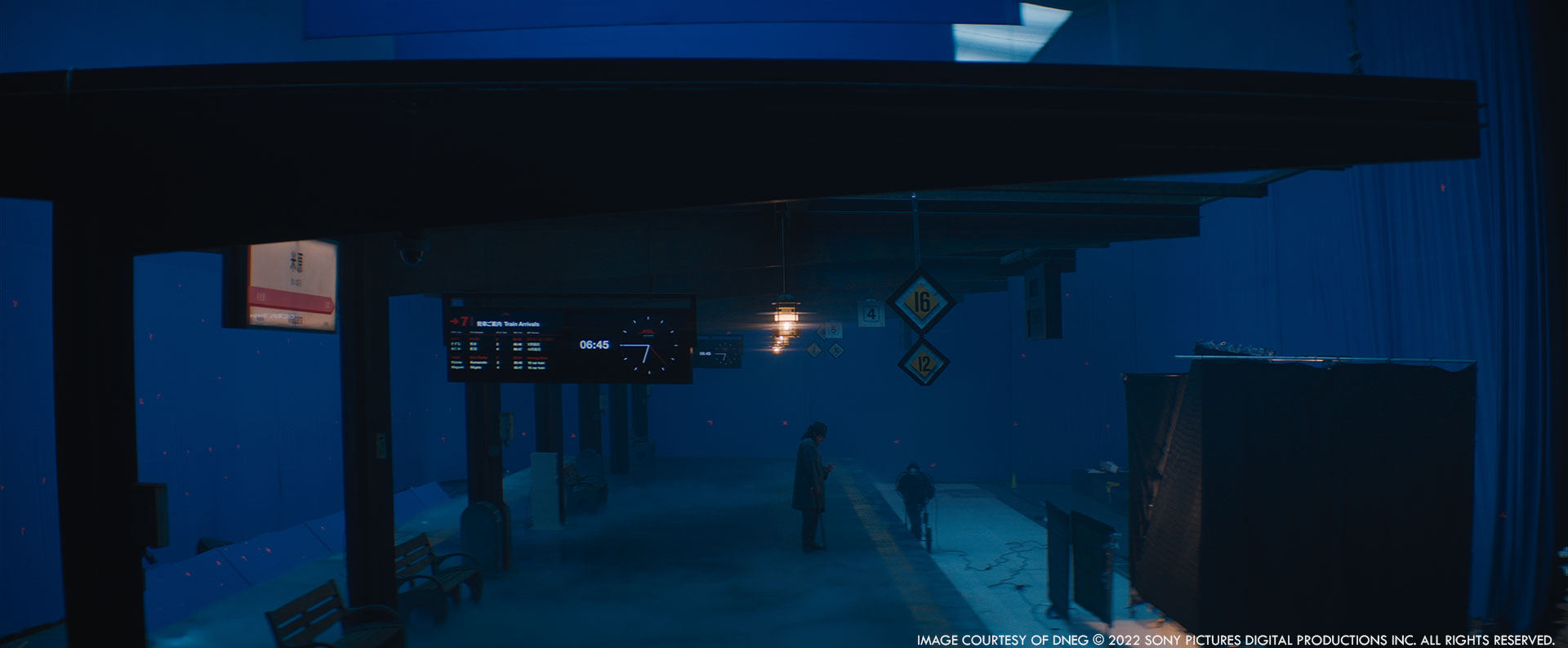
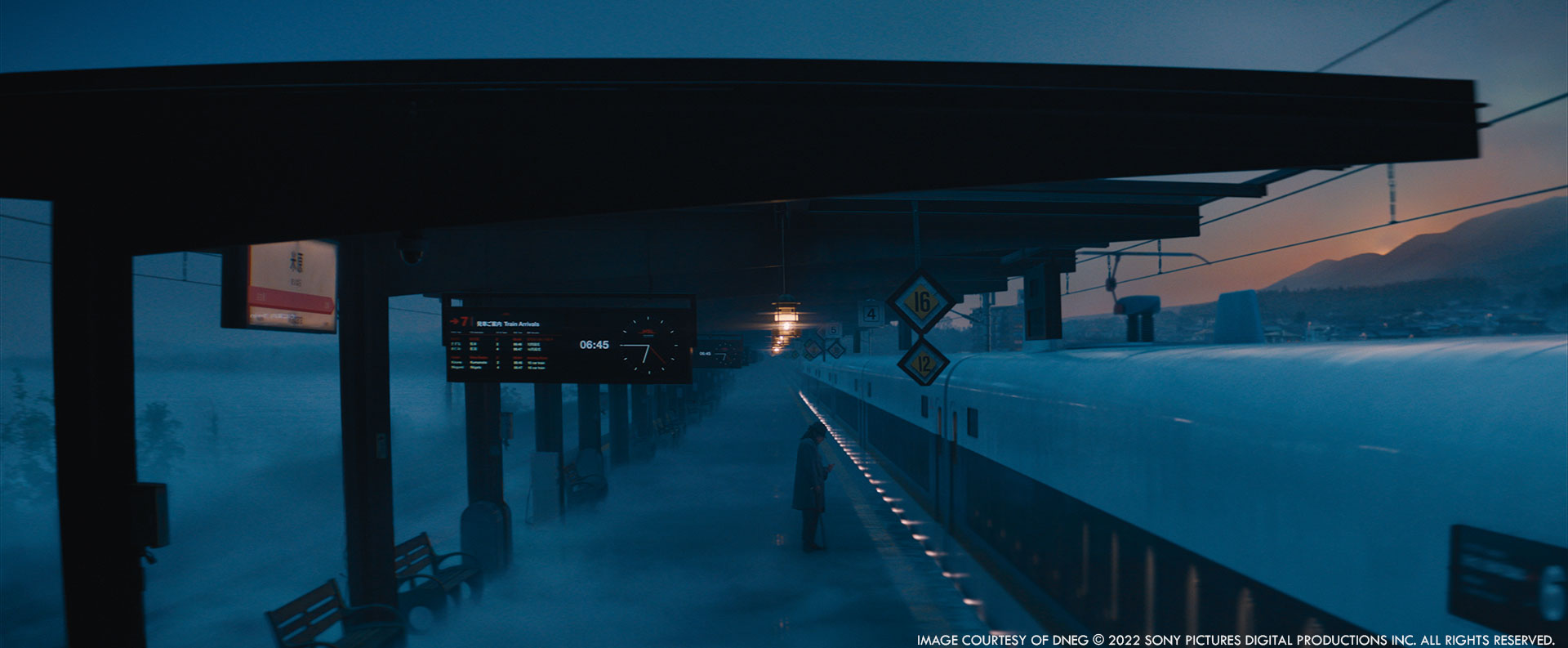
How did you use Virtual Production and LED techniques?
The virtual production was supervised by DNEG VFX Supervisor Daniel Paulsson. There were a variety of techniques used to create content for the LED walls.
To start with: array plates were filmed throughout Japan. Unfortunately you can’t stick an array rig onto a Shinkansen train, so we filmed along long stretches of highway with a rig on top of a van. We had to spend considerable time stabilising these plates as we were retiming these to be 5-6x faster than originally filmed to achieve the speeds of a Shinkansen and the journey needed to be very smooth. These plates also gave us a great reference for lighting, colour, detail that we could look to for our CG content.
We also created pre-rendered CG content of bright, colourful city streets and buildings. Due to the speed of the train, we had to create vast stretches of environment. Environment artists built out city streets with a variety of buildings with architecture that is unique to Japan, as well as street dressing, signage, rivers, bridges, parks. Train tracks with fences, and overhead rail and cable structures gave us the rhythmic repetition and sense of speed that you get when travelling at 300km/h.
For displaying the content, we needed one solution that would work with all the variety of content from arrays to rendered. Real-time camera tracking and rendering on-set wasn’t the right option because of the array plates which would have a baked in perspective. We ended up rendering out our CG in a way that was similar to our filmed array plates once they were stitched together, which gave us a massive resolution image sequence that we could then break apart into panel sections.
There was still a real-time and interactive aspect to the content on-set. Overall VFX Supervisor Mike Brazelton would be able to manually add foreground of pre-rendered tunnels, passing trains, and other track elements if they wanted some specific interest or action out of the windows.
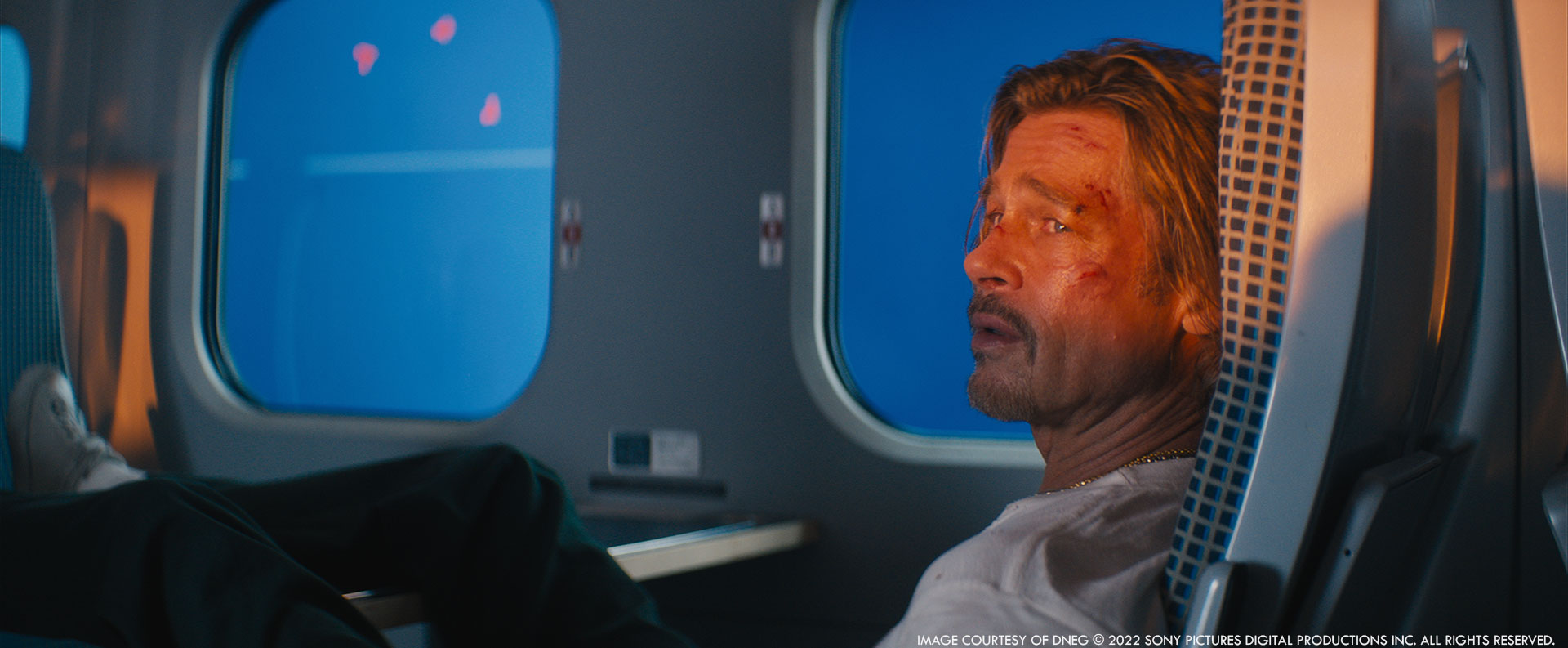
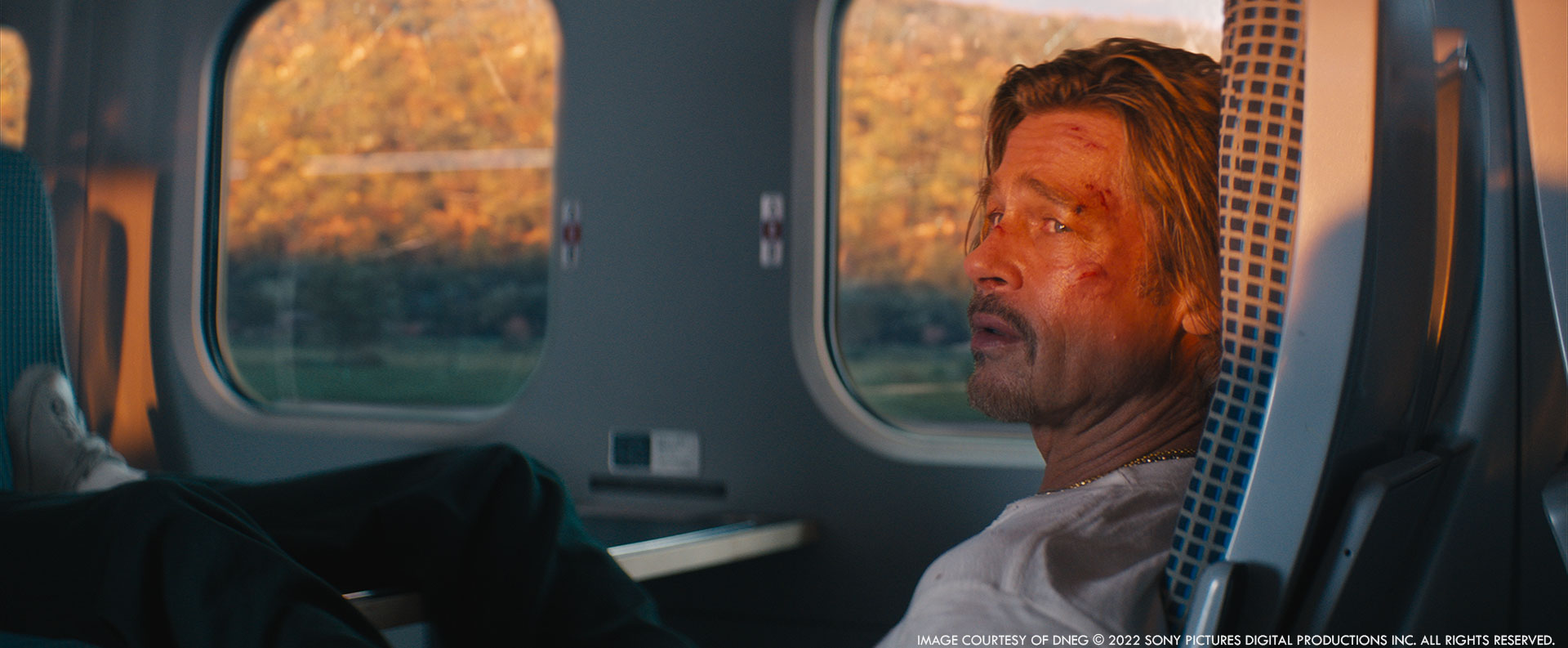
Can you elaborate on the design and the creation of the train?
The design of the train was a blend of existing Shinkansen models with some unique elements. There was a practical train on-set which was used as a stand-in for stunts and performances outside the train, but it was always planned to be replaced as the Shinkansen had to reflect everything in the environment.
Shinkansen trains are kept meticulously clean, and there is very little vibration and any secondary movement…which didn’t make it easy for us! We had to take extra care to add fine details such as surface scratches, panel seams, screws, panel bends to add a level of realism. We had built out the interior framework for destruction work, so we even gave our panelling some bend around these areas just as it would in reality. It’s all very subtle, but when looking down the length of the train or up close at glancing angles it would break up any perfect reflections.
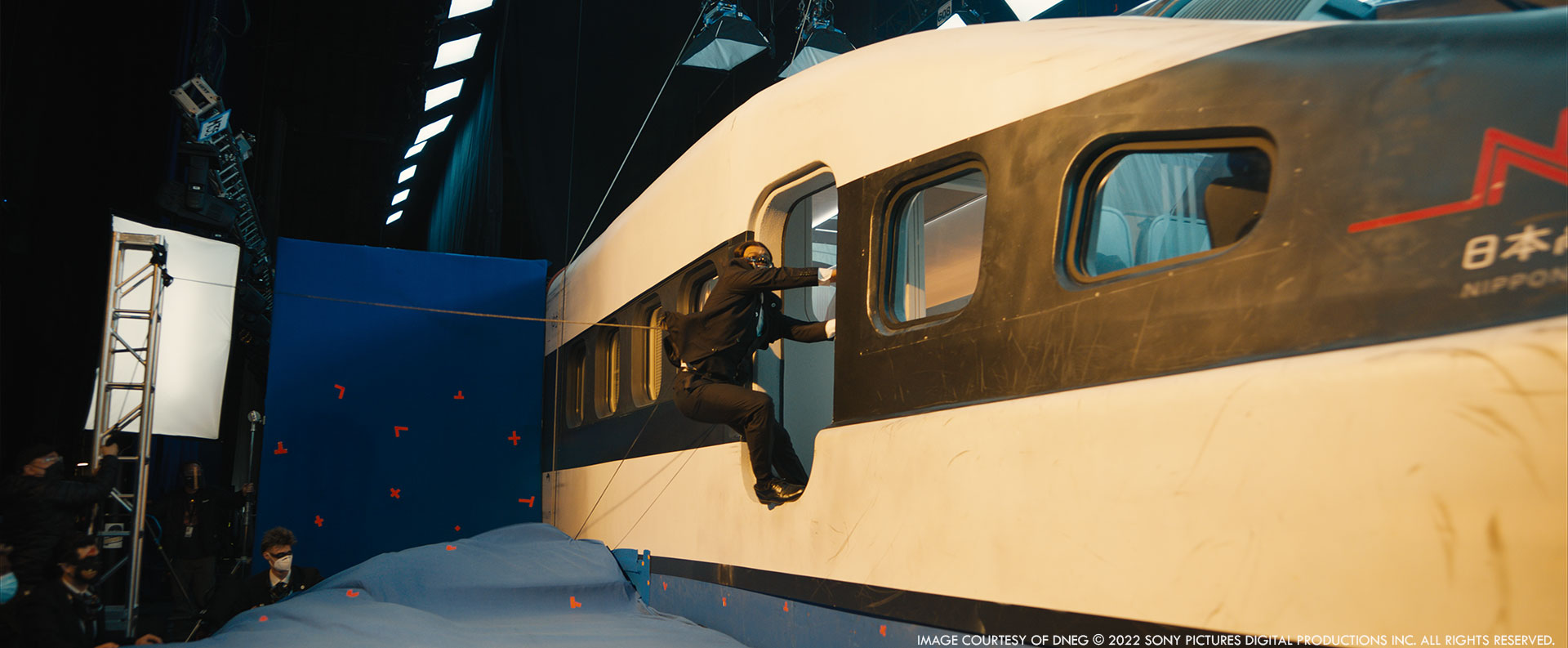
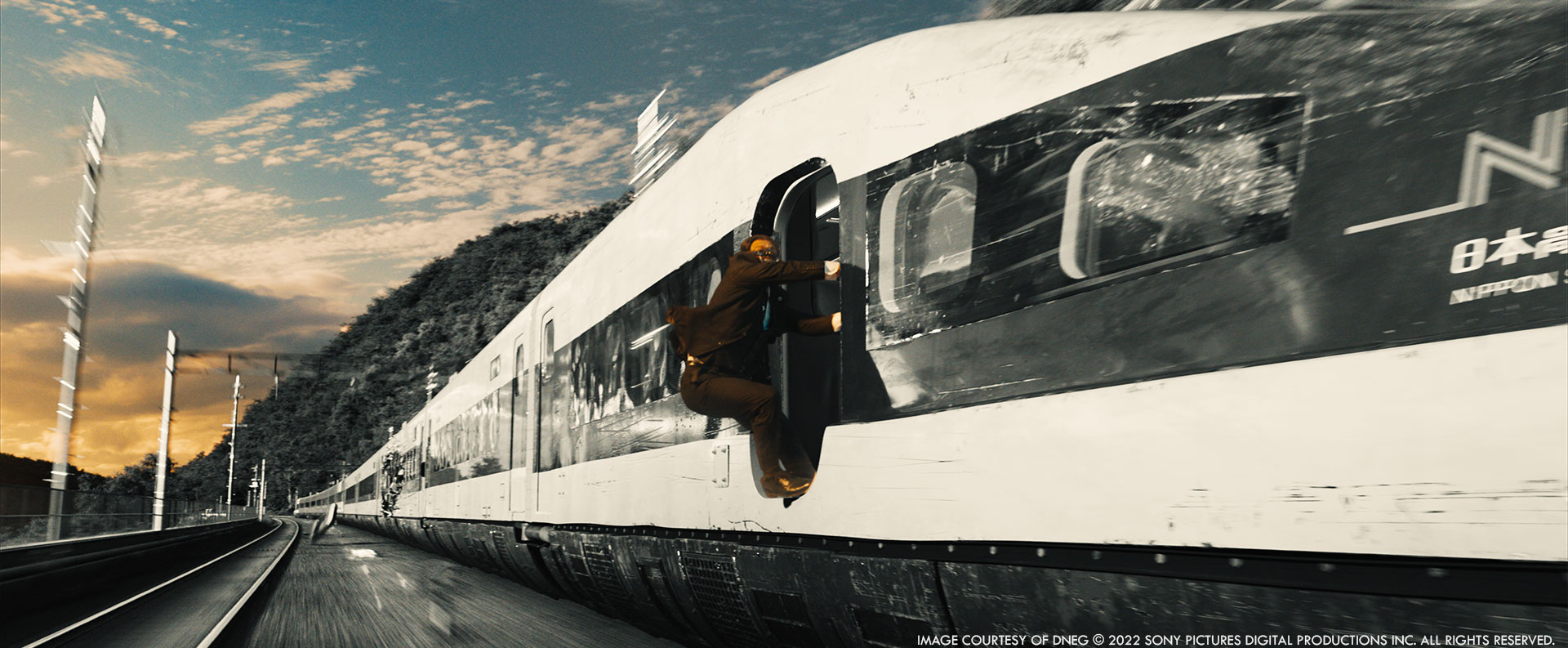
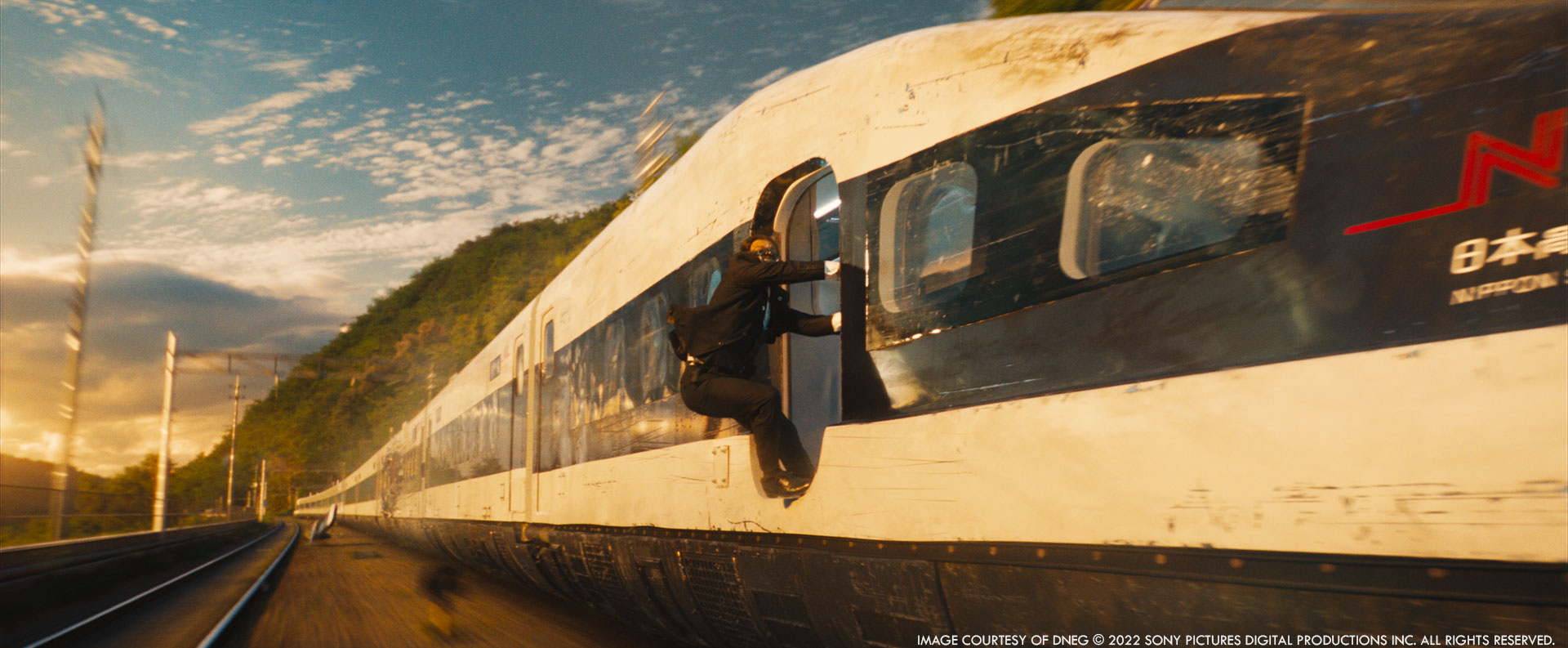
Can you tell us more about the destruction of the train?
We built the train anticipating considerable destruction for the third act of the film. Underneath the exterior we had aluminum framing with foam wall panels, rubber seals, bundles of cables, electrical boxes, and more. The train had four unique car types including economy, first class, lounge, and driver cars, all with their own unique interior designs and props that we could throw around. For example: the lounge car was filled with bottles, utensils and snacks.
Our FX team was supervised by Nick Papworth. The train destruction is featured very close up, and in slow motion, so we needed to have a lot of complexity. Metal would crumple, spark and shred. Wood chairs would bend and splinter, pillows and seats would rip, and so on.
On top of the FX destruction, hero props were also choreographed to hit specific action or comedy beats such as flying Katanas passing the camera or coffee pots which had to smack Brad Pitt in the face.
Once the train was ripped open, we had FX run simulations for panel wobbles.
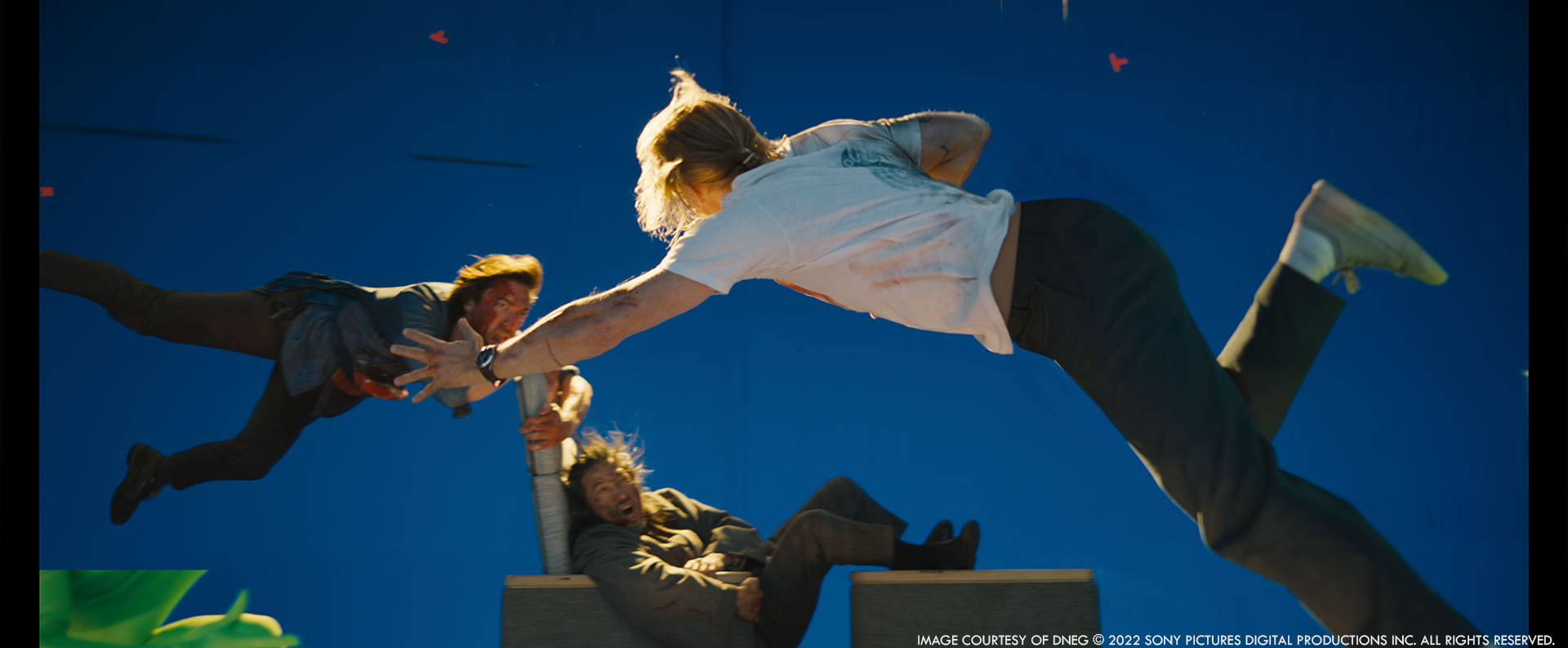
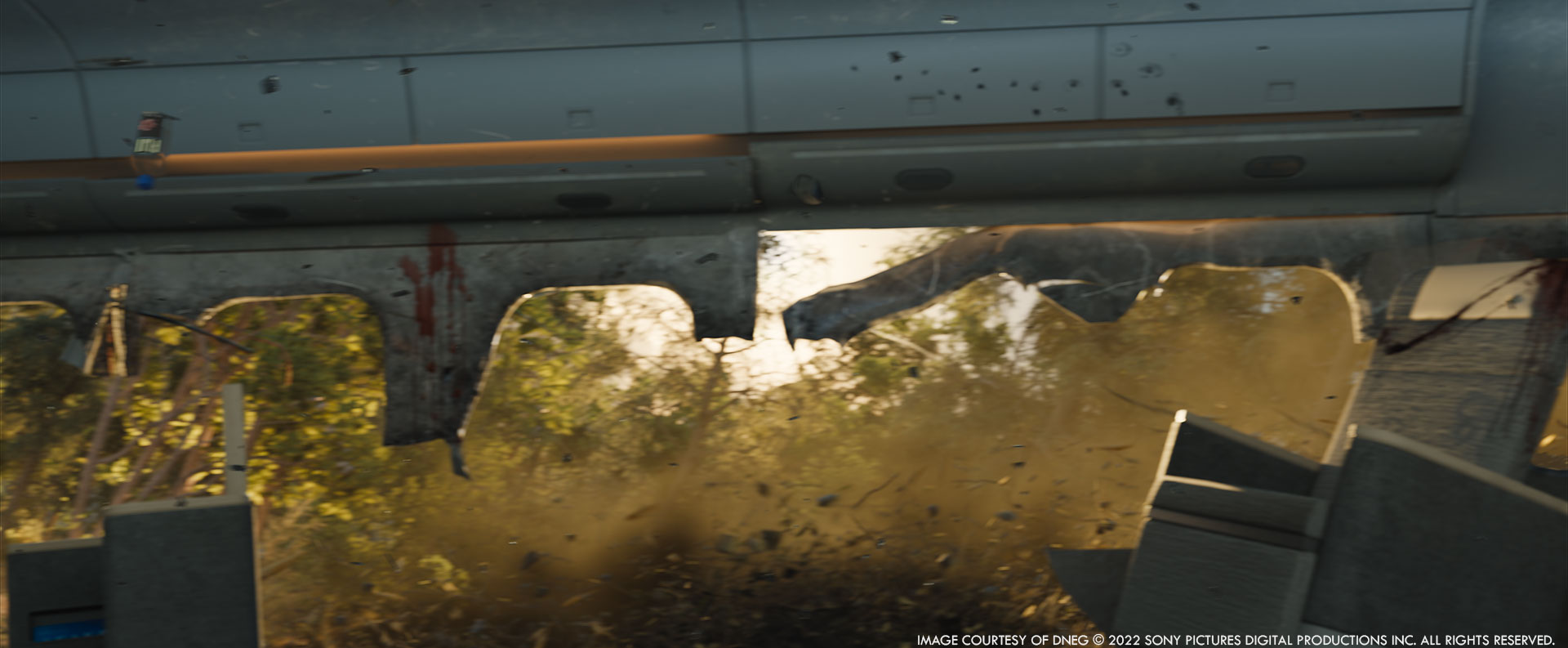
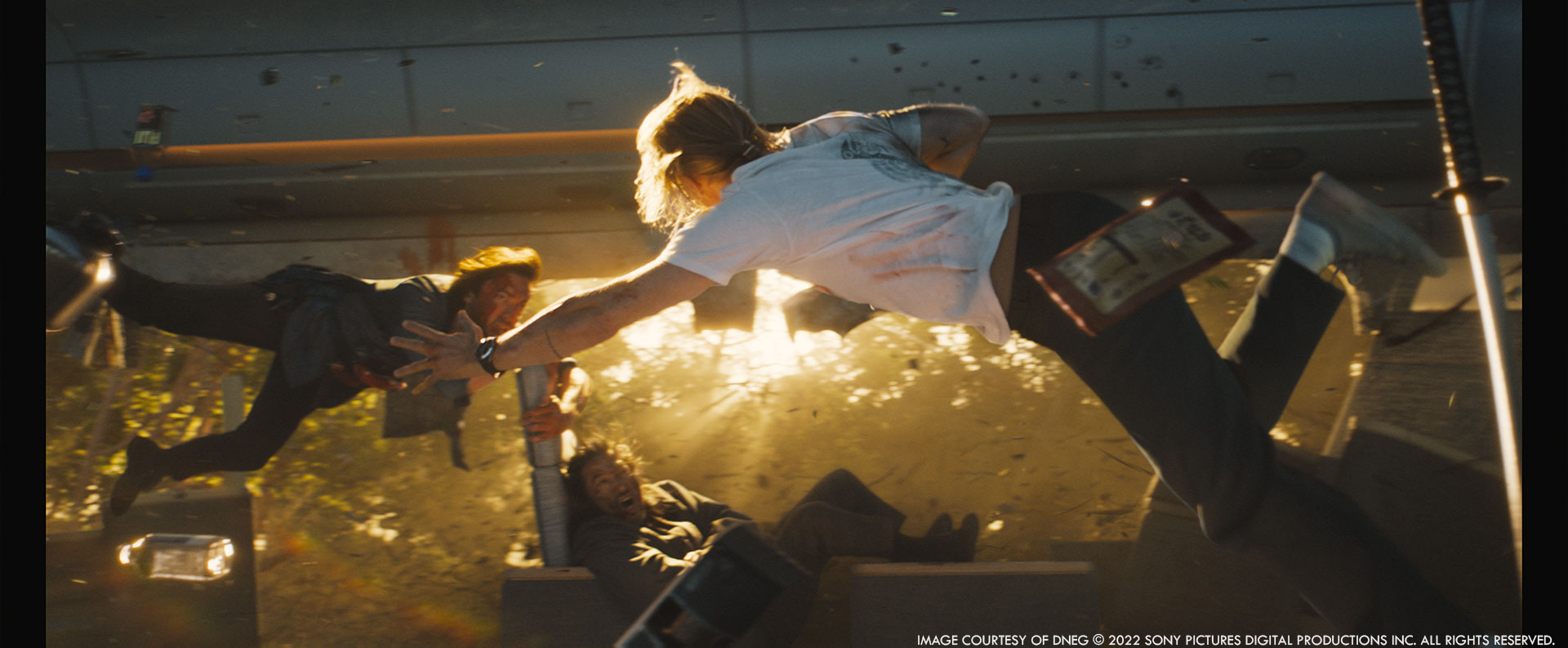
Can you elaborate on the environment creation, especially Tokyo?
For our Tokyo city and Tokyo station environments, we started with concepts from the production designer. Tokyo was to be dense with signage and have intense blocks of colour.
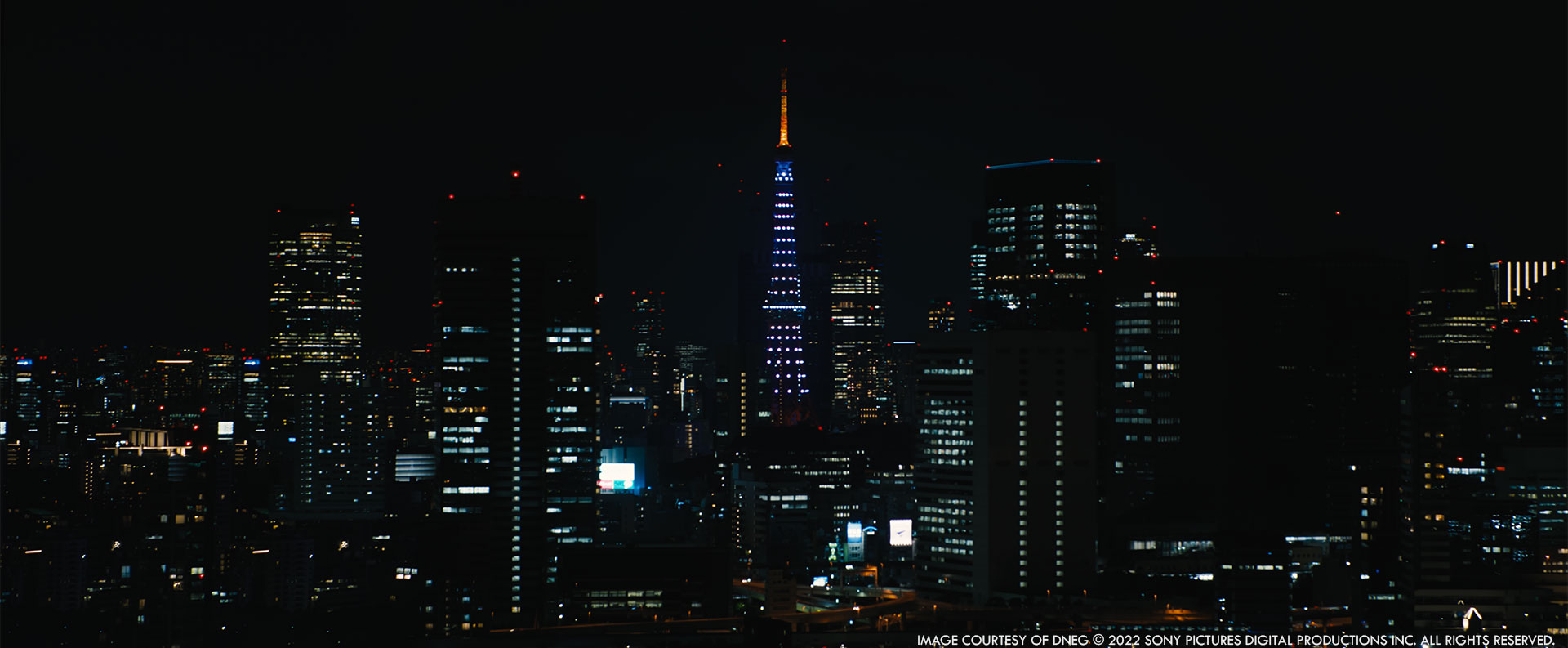
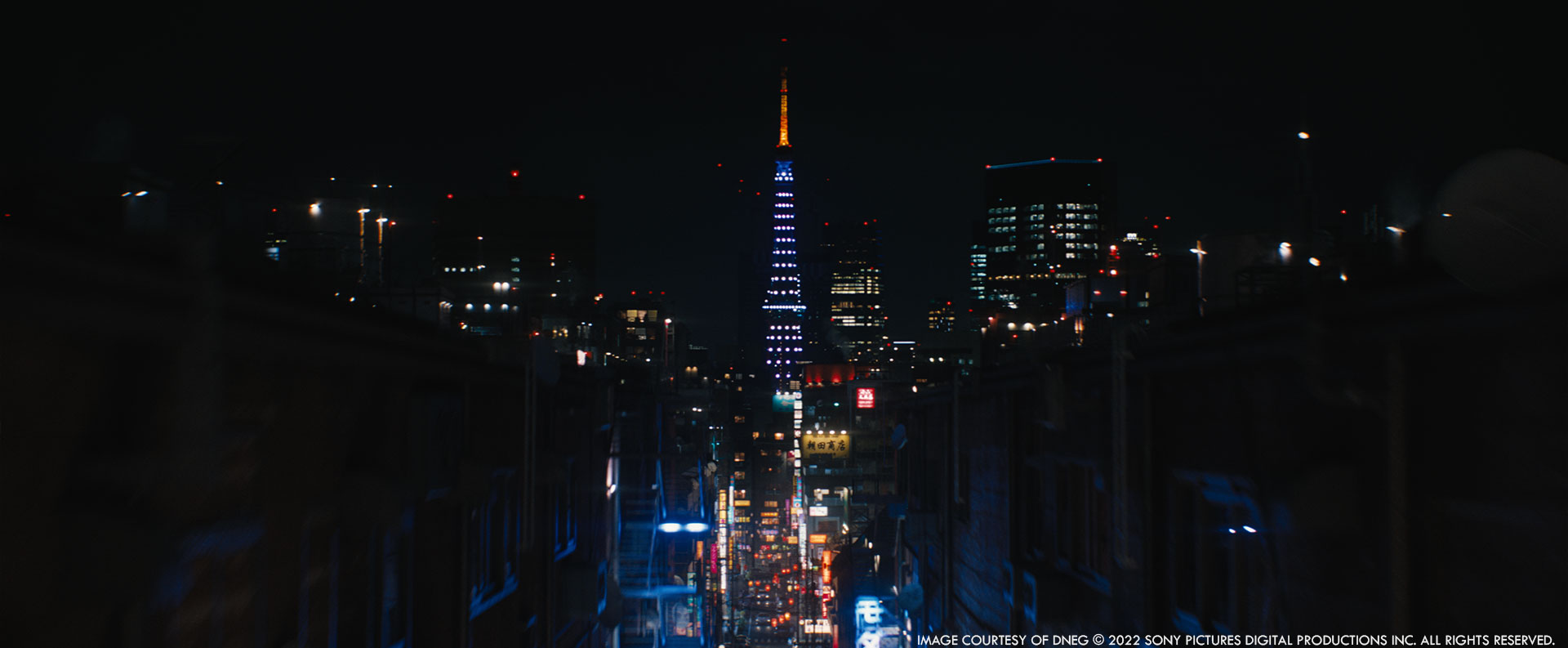
Which location was the most complicated to create and why?
The Kyoto mountain environment, leading into the traditional hillside plaza area, was our most complex environment. It was built to be seen up-close as the train smashes down the mountain and into the village area.
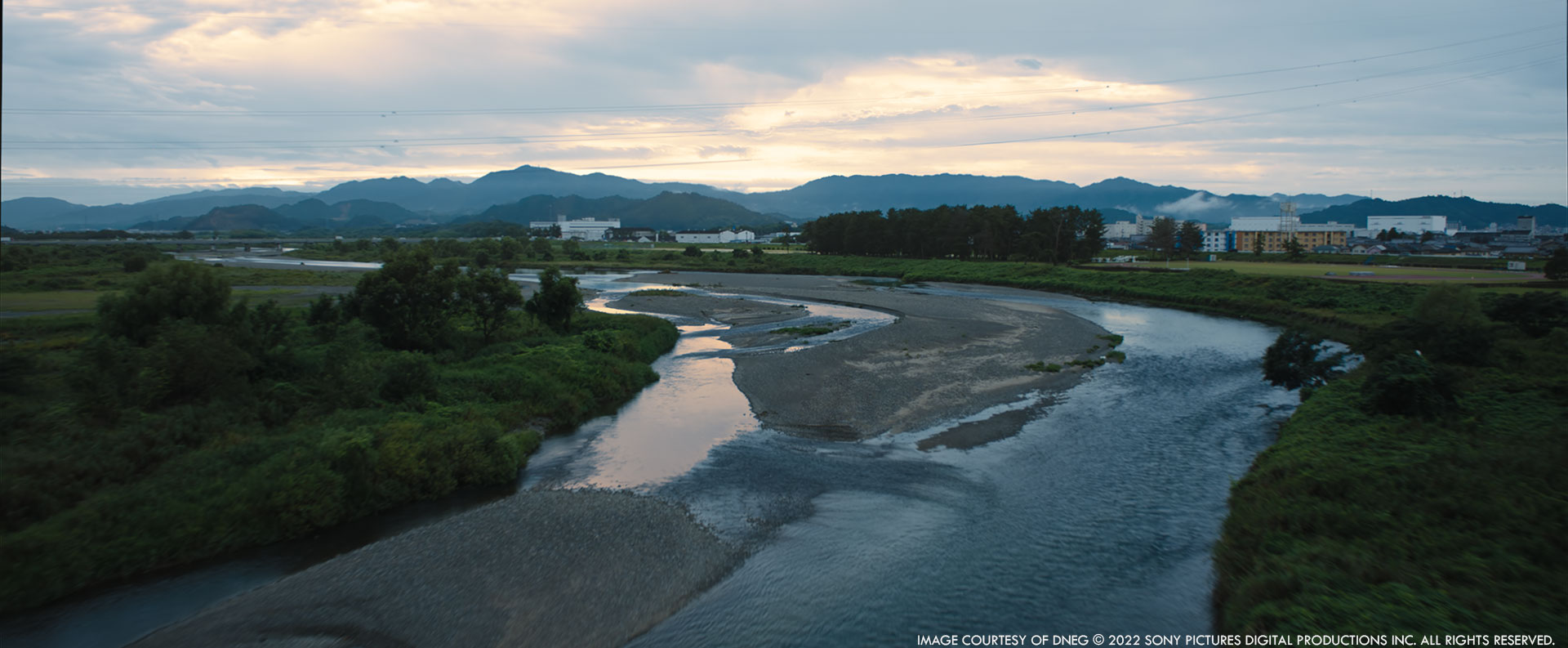
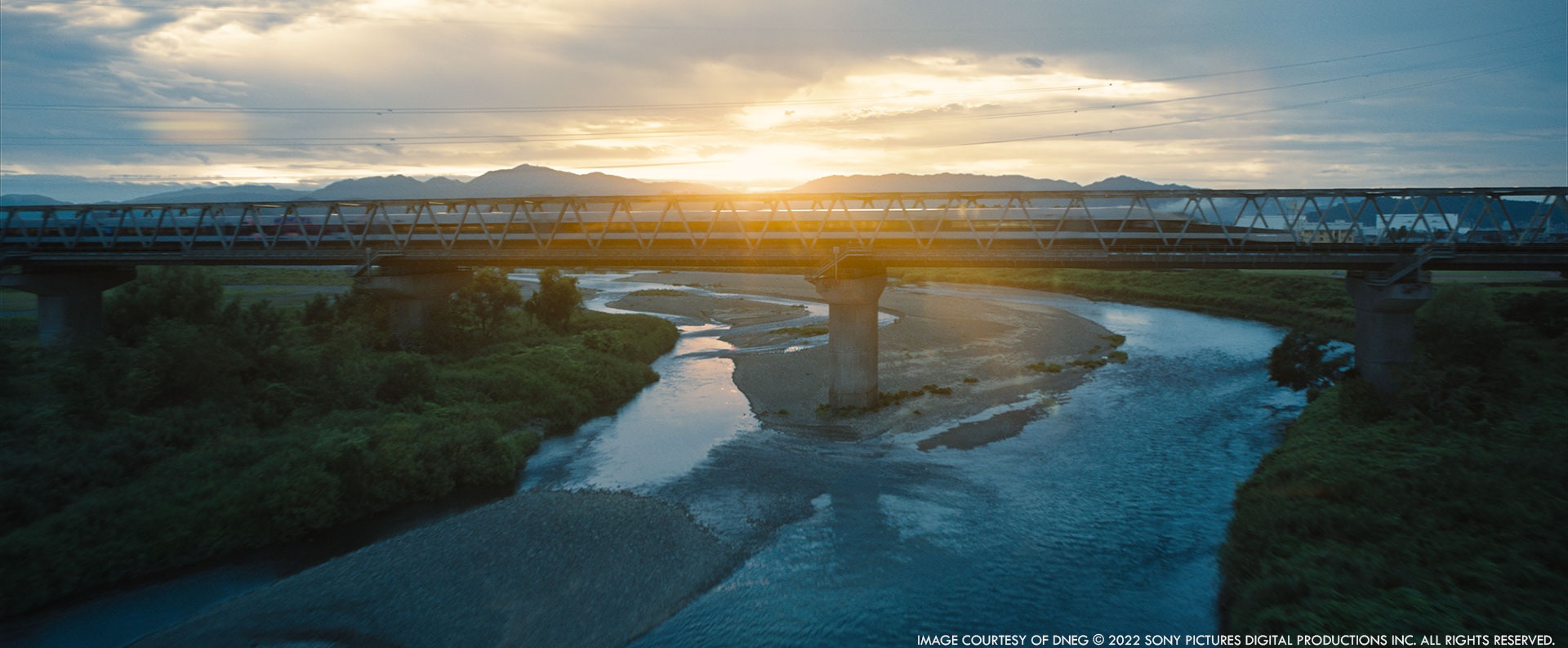
How did you work with the SFX and stunt teams to enhance the fights?
Usually if we were enhancing stunt work it would be to add blood/gore. We had to consider what they were trying to achieve with the action. For the comedy sequences we could go over the top with the violence for a shock or laugh. For the more intense, serious fight sequences such as when the Elder makes his way through the mercenaries with his Katana, we ensured it was more realistic and made the blood sprays feel like an extension of the sword choreography.
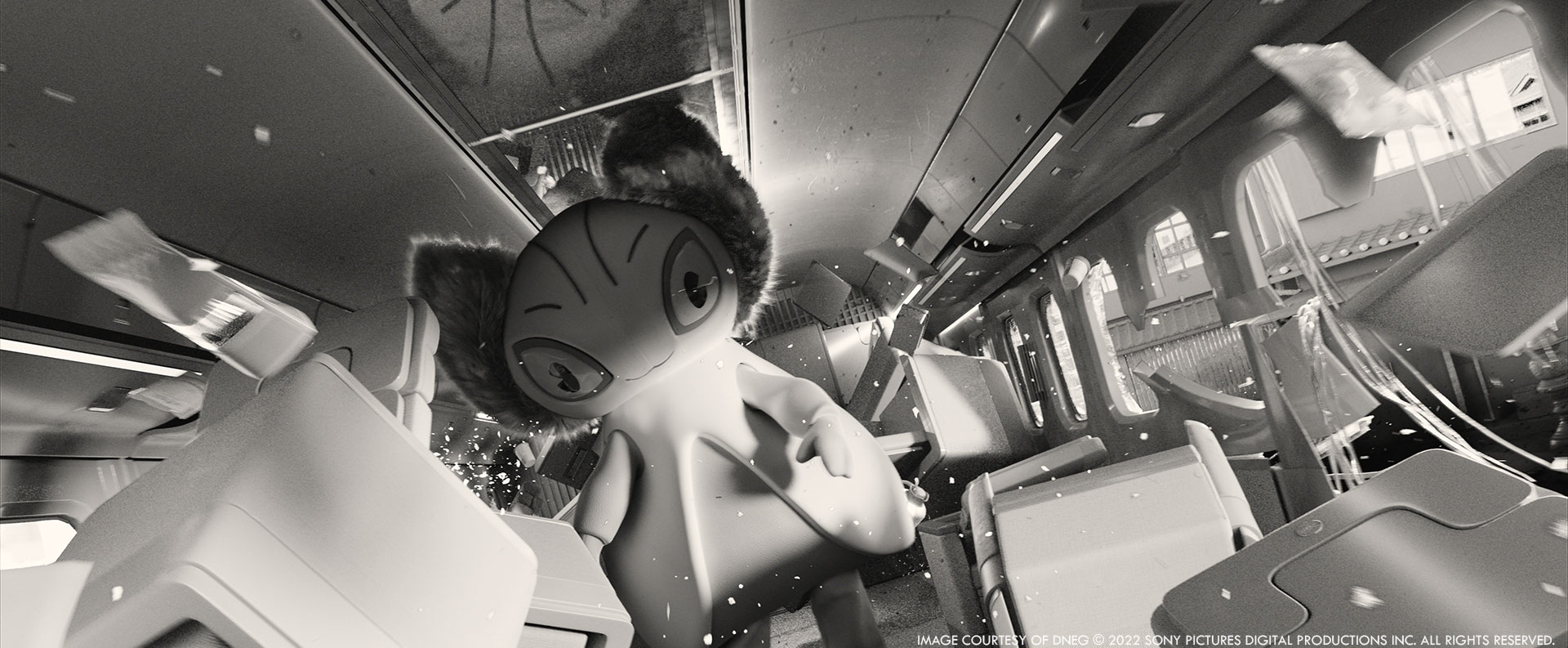
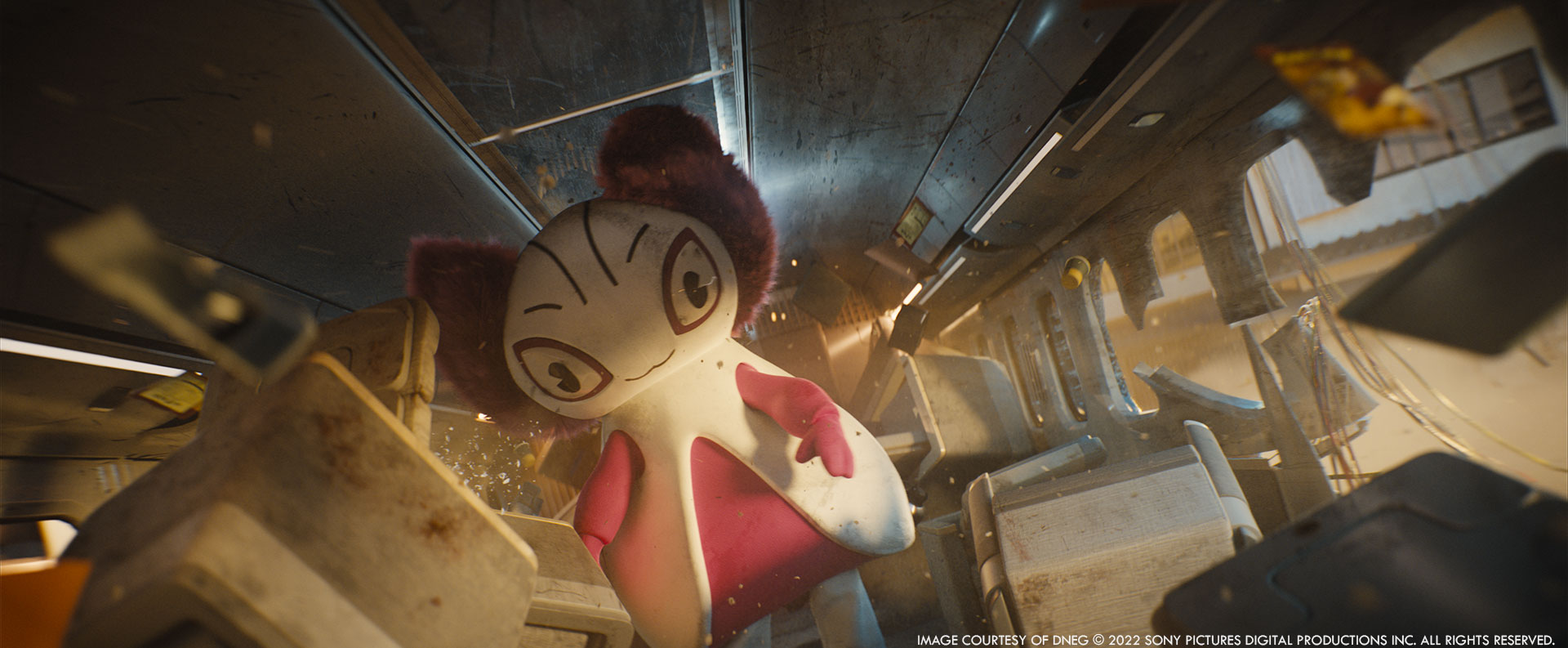
How long did you work on this project?
The post-production process took about 12 months.
What’s the VFX shots count?
DNEG contributed 1017 shots (including LED & Omits) with 880 of those being VFX.
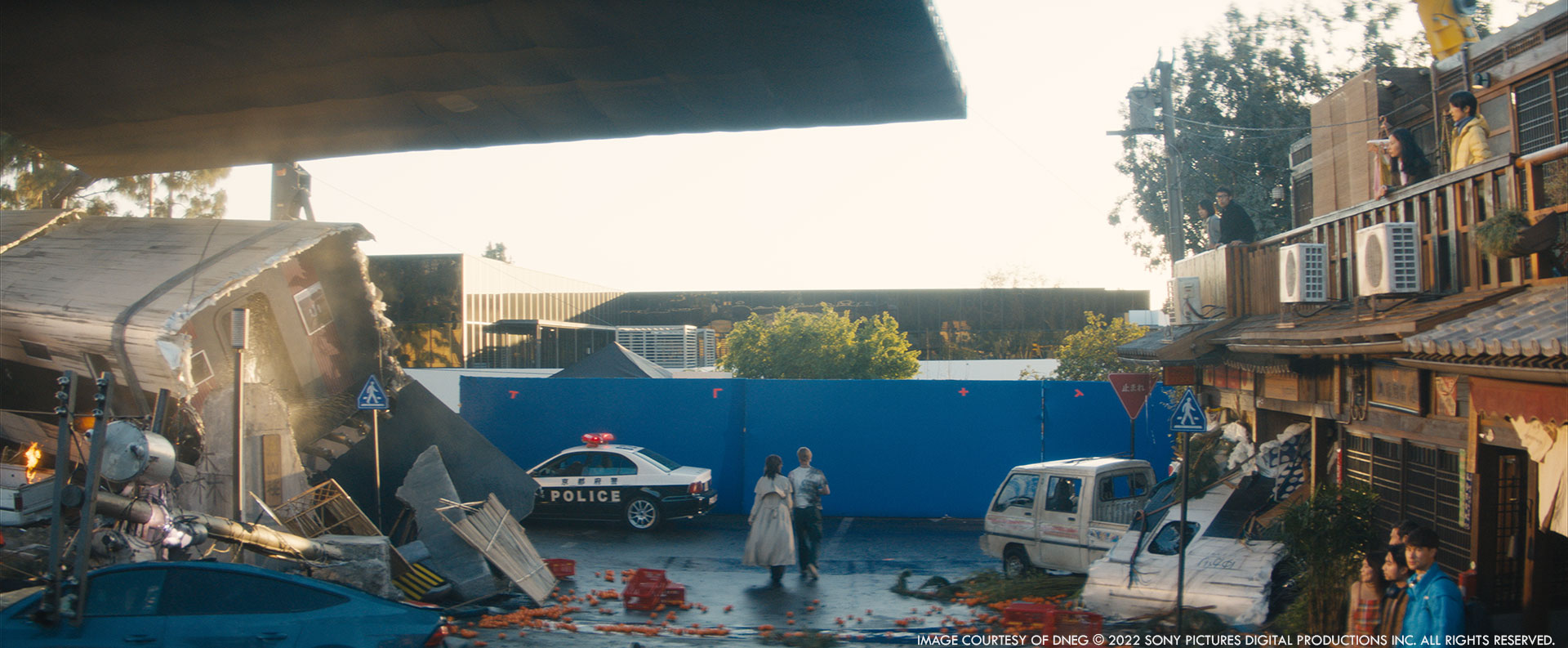
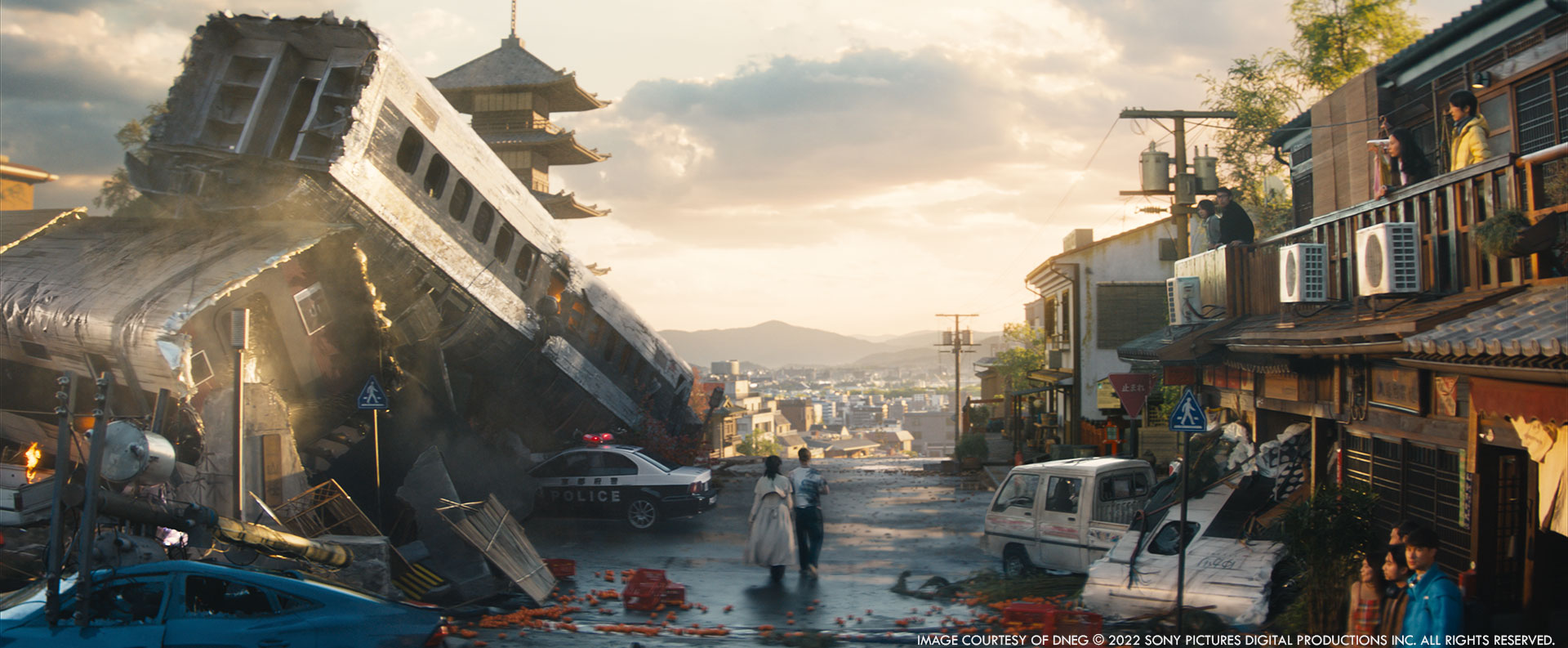
What is your next project?
I am currently working on The Last of Us series for HBO.
A big thanks for your time.
// Bullet Train – Trailer
WANT TO KNOW MORE?
DNEG: Dedicated page about Bullet Train on DNEG website.
© Vincent Frei – The Art of VFX – 2022






